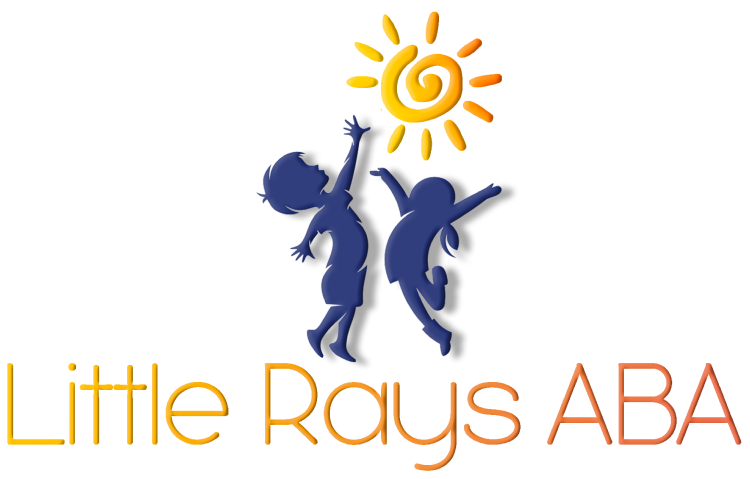Understanding What Are the 2 Main Functions of Behavior ABA
Applied Behavior Analysis (ABA) is a scientific approach used to study and modify socially significant behaviors by understanding their underlying functions. In behavior analysis, every action has a purpose, known as the function of behavior. ABA therapy prioritizes identifying these functions, which help address problem behaviors effectively. This is particularly critical for guiding individuals toward appropriate alternatives that better meet their needs. Understanding the functions of behavior in ABA creates opportunities for applied behavior analysis practitioners to foster positive, long-term behavioral change.
Overview of Behavior Analysis in ABA Therapy
Behavior analysis is the study of why individuals act in specific ways, focusing on the relationship between actions and environmental influences. As a branch of behavior analysis, ABA therapy applies this scientific approach to improve behaviors that significantly impact daily life, such as communication or social skills. Understanding and addressing the function of a behavior is central to this process.
ABA therapy involves systematic assessments to uncover the underlying causes of challenging behaviors. The foundation lies in determining whether an action serves the function of accessing reinforcement—a desirable outcome—or escaping an aversive situation. With this knowledge, practitioners can design evidence-based interventions that help replace problematic behaviors with socially acceptable alternatives. Alongside individualized care, collaboration among therapists, families, and caregivers ensures consistent implementation of ABA techniques that target core behaviors effectively.
Defining Applied Behavior Analysis (ABA)
Applied Behavior Analysis (ABA) is a scientific approach dedicated to understanding and improving socially significant behaviors. By examining the functions of behavior, ABA therapy utilizes data analysis to identify the underlying reasons for specific behaviors. Behavior analysts systematically collect information to inform effective interventions that can reinforce appropriate behaviors while diminishing challenging behavior. This comprehensive methodology enables practitioners to create tailored strategies, addressing individual needs in various settings and facilitating the teaching of new skills through positive reinforcement and other techniques.
Importance of Understanding Behavior in ABA
Understanding behavior in ABA therapy is vital because all actions are purposeful, driven by underlying motivations. Behavior analysis focuses on identifying these motivations—commonly referred to as functions of behavior—to create productive interventions that address their root causes.
For example, a child shouting during lessons may initially seem disruptive. However, behavior analysis might uncover attention-seeking or escape as the primary functions. Addressing such significant behaviors requires ABA therapists to look beyond surface-level actions and implement strategies that fulfill the same needs in socially acceptable ways.
Identifying functions allows ABA therapists to develop focused interventions that target more profound, lasting change. Guiding individuals toward replacement behaviors—such as asking for help or raising their hand for attention—not only addresses immediate challenges but also builds lifelong skills. Recognizing each person’s unique motivations is the cornerstone of effective ABA, fostering positive outcomes and improving quality of life.
The Dual Functions of Behavior in ABA
Behavior in ABA therapy is rooted in two primary functions: access and escape. Access behaviors occur when individuals act to obtain something of reinforcement, whether physical, social, or sensory. Escape behaviors, on the other hand, are motivated by the removal or avoidance of unpleasant stimuli.
Understanding these functions helps ABA practitioners pinpoint why specific behaviors persist. With this clarity, therapists can design interventions that replace challenging tendencies with appropriate actions, allowing individuals to meet their needs effectively and thrive in diverse settings.
Function 1: Access to Reinforcement
Access behaviors aim to obtain a desired outcome or reinforcer. Positive reinforcement plays a vital role in these behaviors, encouraging individuals to repeat actions that lead to pleasurable experiences. This can range from gaining tangible items like toys to enjoying sensory stimulation or social interaction.
In ABA therapy, identifying powerful reinforcers—specific rewards or outcomes valued by the individual—is key to shaping positive behaviors. For example, a teacher might provide a sticker for completing a task, motivating the student to engage repeatedly. Similarly, access behaviors may be automatic, as seen when spinning satisfies sensory needs independently.
Understanding access-driven behaviors allows practitioners to employ reinforcement strategies effectively. By identifying preferred activities or items as motivators, ABA therapists can encourage socially acceptable alternatives to problem behaviors, creating positive outcomes tailored to the individual’s needs.
Function 2: Escape or Avoidance of Unpleasant Situations
Escape behaviors serve to avoid or remove aversive stimuli, making them a function of negative reinforcement. Whether it's avoiding a challenging task or a loud environment, such actions result in relief from unpleasant experiences, increasing the likelihood of repetition.
For example, a student tearing homework to avoid completing it showcases escape-driven behavior, with the act of destruction temporarily removing the aversive task. Recognizing escape behaviors involves analyzing triggers and environmental stressors to identify underlying causes.
ABA therapy focuses on minimizing escape actions through alternatives. Teaching self-advocacy, gradually introducing difficult tasks, or pairing unattractive activities with highly reinforcing ones can alter behavior effectively. By targeting the triggers and offering structured options, ABA practitioners replace problem behaviors with appropriate behaviors that meet the same functional needs.
In-depth Exploration of Access to Reinforcement
Access to reinforcement serves as a powerful motivator in shaping behavior, driving individuals to engage in socially significant actions. Positive reinforcement occurs when the outcome of a behavior results in access to tangible items or preferred activities, reinforcing the likelihood of that behavior being repeated. This process is critical in behavior analysis, as it highlights the function of behavior in achieving desired outcomes, thereby promoting new skills and appropriate behaviors. Understanding these dynamics allows behavior analysts to create effective interventions tailored to individual needs.
Role of Positive Reinforcement in ABA
Positive reinforcement is a cornerstone of applied behavior analysis (ABA) and plays a vital role in shaping socially significant behaviors. This process involves offering a favorable stimulus following a desired behavior, effectively increasing the likelihood of its recurrence. For instance, providing praise or tangible rewards reinforces the demonstration of new skills, such as social interaction or following instructions. By understanding individual needs, ABA therapists employ positive reinforcement to motivate children, creating a supportive environment that fosters the development of appropriate behaviors and enhances overall learning outcomes.
Examples of Access to Tangibles and Activities
Access to tangibles and activities plays a crucial role in shaping behaviors within the field of applied behavior analysis (ABA). Examples include providing a child with a preferred toy after they complete a non-preferred task, effectively using positive reinforcement to encourage compliance. Moreover, allowing access to enjoyable activities, such as playtime, following the successful use of functional communication skills can further enhance engagement. These strategies not only promote appropriate behaviors but also help children learn to express their needs effectively, paving the way for increased social interaction.
Comprehensive Analysis of Escape Behaviors
A thorough understanding of escape behaviors reveals their critical role within applied behavior analysis. These behaviors often arise as a response to specific triggers, representing an individual’s attempt to seek relief from an aversive stimulus. Behavioral analysts emphasize the importance of identifying the underlying cause of the behavior through functional analysis. This provides valuable insights, enabling the development of effective interventions that address the need for escape while promoting appropriate replacement behaviors, ultimately fostering a more supportive environment tailored to individual needs.
Identifying Situations that Trigger Escape Behaviors
Escape behaviors often arise in response to specific triggers that can vary across different settings. These situations may involve overwhelming sensory input, challenging tasks, or the presence of aversive stimuli. For example, a child may exhibit problem behavior when faced with difficult academic demands or social interactions that feel uncomfortable. Identifying these triggers is crucial for behavior analysts, as it enables the development of effective interventions tailored to the individual's needs, ultimately reducing the occurrence of escape-related challenging behaviors.
Case Studies: Managing Escape-Motivated Behaviors
Escape-motivated behaviors often stem from overwhelming scenarios where a child seeks relief from an aversive stimulus. One case study illustrates a child exhibiting disruptive behavior to escape a challenging task. Through functional analysis, the behavior analyst identified the underlying cause and implemented a structured behavior intervention plan (BIP). This included reinforcing appropriate replacement behaviors and modifying tasks to manageable levels. Another example shows a child using functional communication training to request breaks, demonstrating the effectiveness of tailored strategies that address specific behavioral functions, improving overall social interaction.
Strategies for Assessing Behavior Functions
Assessing behavior functions serves as a cornerstone in effective ABA therapy. Implementing functional behavior assessments (FBA) allows behavior analysts to identify the underlying cause of a specific behavior, offering valuable insights into whether the behavior seeks access to reinforcement or aims to escape an aversive stimulus. Utilizing observation techniques enhances the understanding of triggers and contexts for challenging behaviors. By continuously analyzing data, practitioners can refine their approaches, ensuring interventions are responsive to individual needs while fostering the development of appropriate replacement behaviors.
Implementing Functional Behavior Assessments (FBA)
Implementing functional behavior assessments (FBA) is essential for understanding the underlying causes of challenging behaviors. This scientific approach involves systematically observing a child in different settings to identify specific behaviors and their triggers. By analyzing the consequences of these behaviors, behavior analysts can uncover the function of the behavior, whether it be for access to reinforcement or for escape. The insights gained from an FBA guide the development of effective behavior intervention plans (BIP) tailored to meet the individual needs of each child, ensuring positive outcomes.
Observation Techniques and Their Relevance
Observation techniques serve as a cornerstone in behavior analysis, enabling practitioners to gain valuable insights into the functions of behavior. By meticulously documenting individual interactions and reactions in various settings, ABA therapists can identify triggers and contextual factors influencing behavior. This scientific approach not only highlights challenging behaviors but also uncovers opportunities for positive reinforcement and effective replacements. Additionally, consistent data collection through observation informs the development of tailored interventions, ensuring strategies address specific needs while fostering significant social skills and appropriate behaviors.
Designing Interventions Based on Identified Functions
Identifying the function of behavior is essential in designing effective interventions. Tailored behavior intervention plans (BIPs) incorporate the specific reasons behind challenging behaviors, ensuring they address the underlying causes. For instance, when a child seeks access to reinforcement, interventions can focus on redirecting to appropriate behaviors or increasing opportunities for positive reinforcement. Implementing functional communication training can enhance social skills, enabling individuals to express needs functionally rather than through problem behavior. A comprehensive approach ensures that interventions are not only effective but also considerate of individual needs and preferences.
Creating Effective Behavior Intervention Plans (BIP)
Behavior intervention plans (BIPs) play a pivotal role in addressing specific behaviors by focusing on their functions and underlying causes. A well-crafted BIP incorporates data analysis from functional behavior assessments (FBAs) to pinpoint triggers and tailor interventions accordingly. Essential components include defining targeted behaviors, implementing positive reinforcement strategies, and teaching appropriate replacement behaviors. Collaboration with behavior analysts ensures that plans are continually adjusted based on progress and the individual's unique needs, ultimately fostering socially significant behaviors and enhancing overall well-being.
Strategies for Teaching Replacement Behaviors
Identifying appropriate replacement behaviors is essential for addressing challenging behaviors effectively. Implementing functional communication training can provide individuals with the means to express their needs, reducing the reliance on problem behaviors. By modeling the desired actions within various settings, behavior analysts can promote social skills and facilitate positive interaction. Additionally, incorporating visual aids and reinforcement strategies can enhance understanding and retention. Continuous data collection will ensure that these interventions are tailored to individual progress, maximizing the chances of successful behavior modification.
Monitoring and Adjusting ABA Strategies
Constant monitoring and adjustment are pivotal in applied behavior analysis (ABA) to ensure interventions remain effective. Data collection provides valuable insights into behavior functions, allowing ABA therapists to tailor strategies to individual needs. When searching for ABA services near me, it’s essential to find a provider that truly understands the core functions of behavior: gaining something or avoiding something. By identifying these key triggers, ABA services can be tailored to meet your child’s unique needs. Whether you're looking for in-home sessions or center-based therapy, a skilled ABA provider can help teach your child new behaviors, improve social skills, and manage challenging actions. Take the first step toward your child’s success today—contact an ABA provider near you to explore effective strategies for meaningful progress.
Importance of Continuous Data Collection
Continuous data collection is essential for understanding the functions of behavior within ABA therapy. It provides behavior analysts with valuable insights into specific behaviors and their contexts, allowing for precise analysis and timely adjustments to interventions. By consistently tracking data, changes in behavior can be linked to particular triggers or reinforcers, enhancing the effectiveness of interventions. This scientific approach not only monitors progress but also ensures that strategies remain aligned with individual needs, ultimately leading to more effective behavior intervention plans that support the development of socially significant behaviors.
Tailoring Interventions to Individual Progress
Successful behavior intervention plans require a tailored approach that considers the individual needs and progress of each child. Regular data collection allows ABA therapists to analyze how specific behaviors respond to interventions, ensuring that strategies remain effective and relevant. Adjustments based on the ongoing assessment of progress enable the use of positive reinforcement in a manner that resonates with the child. Continually observing behaviors and their triggers is essential in fine-tuning interventions, allowing for an adaptive, comprehensive approach that fosters significant growth and development.
Conclusion
Understanding the intricate functions of behavior through applied behavior analysis (ABA) reveals the significant role they play in shaping appropriate behaviors. By analyzing both access to reinforcement and escape behaviors, behavior analysts can develop effective behavior intervention plans that cater to individual needs. Continuous data analysis ensures that these interventions remain relevant and adaptable, fostering social skills and enhancing quality of life. Ultimately, a comprehensive approach empowers individuals to replace challenging behaviors with more socially significant behaviors, reinforcing the positive change that can emerge from ABA therapy.
At
Little Rays ABA, we focus on the two main functions of behavior in ABA therapy—to gain something or to avoid something. Our team tailors interventions to help children understand and modify behaviors by addressing the underlying needs. Whether it’s reinforcing positive actions or teaching new skills, our approach ensures measurable, long-term improvements. Ready to help your child succeed?
Contact Little Rays ABA
today to learn how our specialized therapies can unlock your child’s potential.
Frequently Asked Questions
How can understanding behavior functions improve ABA outcomes?
Understanding behavior functions enhances ABA outcomes by enabling practitioners to tailor interventions effectively. When behavior is assessed accurately, strategies can be designed to address specific needs, leading to improved communication, skill acquisition, and overall progress for individuals in therapy.
What are common tools used for behavior assessment in ABA?
Common tools for behavior assessment in ABA include functional behavior assessments (FBAs), direct observation methods, and checklists. These tools help identify the purpose behind behaviors, allowing practitioners to implement effective interventions tailored to individual needs. Proper assessment is crucial for successful outcomes.
Can behavior functions change over time in ABA therapy?
Yes, behavior functions can change over time in ABA therapy due to various factors, such as environmental influences, skill development, and changing motivations. Continuous assessment is essential to identify these shifts and adapt interventions accordingly for optimal progress.
Sources
- https://www.behavior-analysis.org/
- https://www.simplypsychology.org/positive-reinforcement.html
- https://pmc.ncbi.nlm.nih.gov/articles/PMC9458805/
- https://intensiveintervention.org/sites/default/files/Reinforcement_Strategies_508.pdf
- https://www.michigan.gov/-/media/Project/Websites/mde/specialeducation/familymatters/FM1/BIP_FactSheet.pdf?rev=37815ab42ca64a69a6d50b9dba2dd384
- https://www.cde.state.co.us/cdesped/ta_fba-bip
Related Posts





